
During the spring, Hanamiyama, and the surrounding scenery, explodes with colour and beauty.

I have always associated the Japanese custom of hanami (flower viewing) with light pink cherry blossom. But at Hanamiyama, there is just so much colour!
During my visit to Hanamiyama I saw Yoshino cherry blossom (someiyoshino), double cherry blossom (yaenozakura), peach blossom (momo), flowering peach blossom (hanamomo), white magnolia (hakumokuren), Japanese quince (boke), Japanese allspice (roubai), among many others.
I visited Hanamiyama by bus from Fukushima Station.
During peak cherry-blossom viewing time, there are frequent temporary buses that go between Fukushima Station and the park. The bus stop was easily signposted and there were main guides helping people figure out where to line up.
On arriving at Hanamiyama, I was surprised at how different the scenery was to my previous visits in September and February – it was unrecognisable! No matter where you looked, beautiful bright pink and yellow flowers blanketed the fields and hillsides.
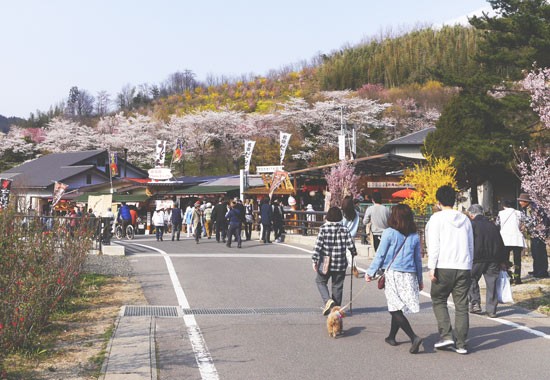
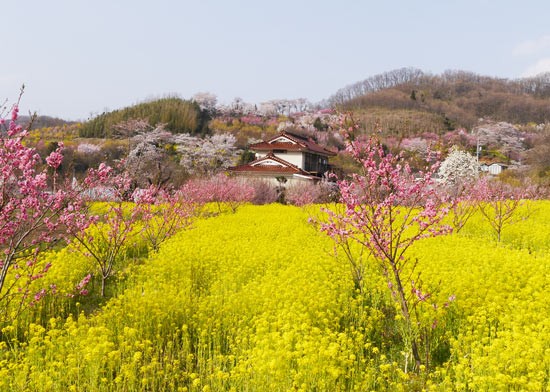
From the bus stop, the walk to the actual park entrance was around a 10-minute walk, but all along the way the scenery was so amazing, the time flew by.
After entering the park, I came to realise that, despite the beauty of the surrounding fields and hills, the flowers and foliage within the grounds of Hanamiyama are on a whole other level.





There were so many different types of flowers, and the curving shapes of the path up the hill that stands at the centre of Hanamiyama meant that it was exciting to try and guess what kind of flower you might meet at the next turn or bend.




The 1-hour course took us a little longer because we took a lot of photographs on the way up, but it didn’t feel like it dragged on or was too long. Being outside under the warm sun, smelling the light scents of the different blossom passing past me on the wind, hearing bird song – it was so lovely.



From the top of Hanamiyama, we had a quick rest, took photographs and planned our route down using the visitor maps that we received upon entering the park.


There were many people eating their lunch and hanging out at the top of the hill, and a few areas on the way up and down where people were eating packed lunches. However, there are no areas to lay a tarp or blanket on the ground and have a picnic, as visitors tend to do in huge parks.
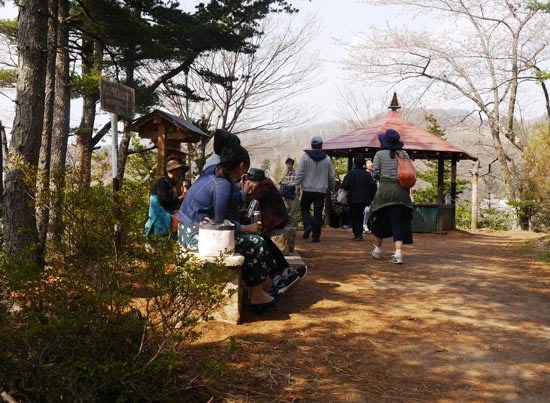
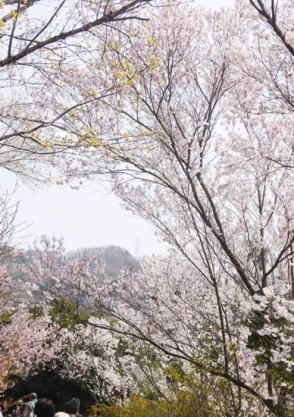
On the way down, we passed through the sakura tunnel, which is one of the key photo spots for visitors.


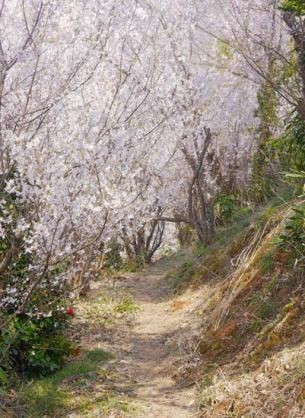



There were a lot more people enjoying Hanamiyama on the day of my visit than I was expecting. However, it didn’t feel crowded or overwhelming. There are also many different routes to take through the park and quieter areas which appear to have yet to be discovered by the majority of visitors!


I thought that Hanamiyama could never live up to the stunning photographs I had seen over the last 8 months, but it was so much better than could be captured in any number of photos.
I can now understand why Mr Abe, the owner, loves this place so much that he decided to hold his wedding reception in the park, on a day with sakura in full bloom, just as they were during my visit.

My photos do not do it justice at all, so you’ll have to go and see it for yourself! You might find these pages useful for planning your trip to Hanamiyama. Hope to see you there next year!


